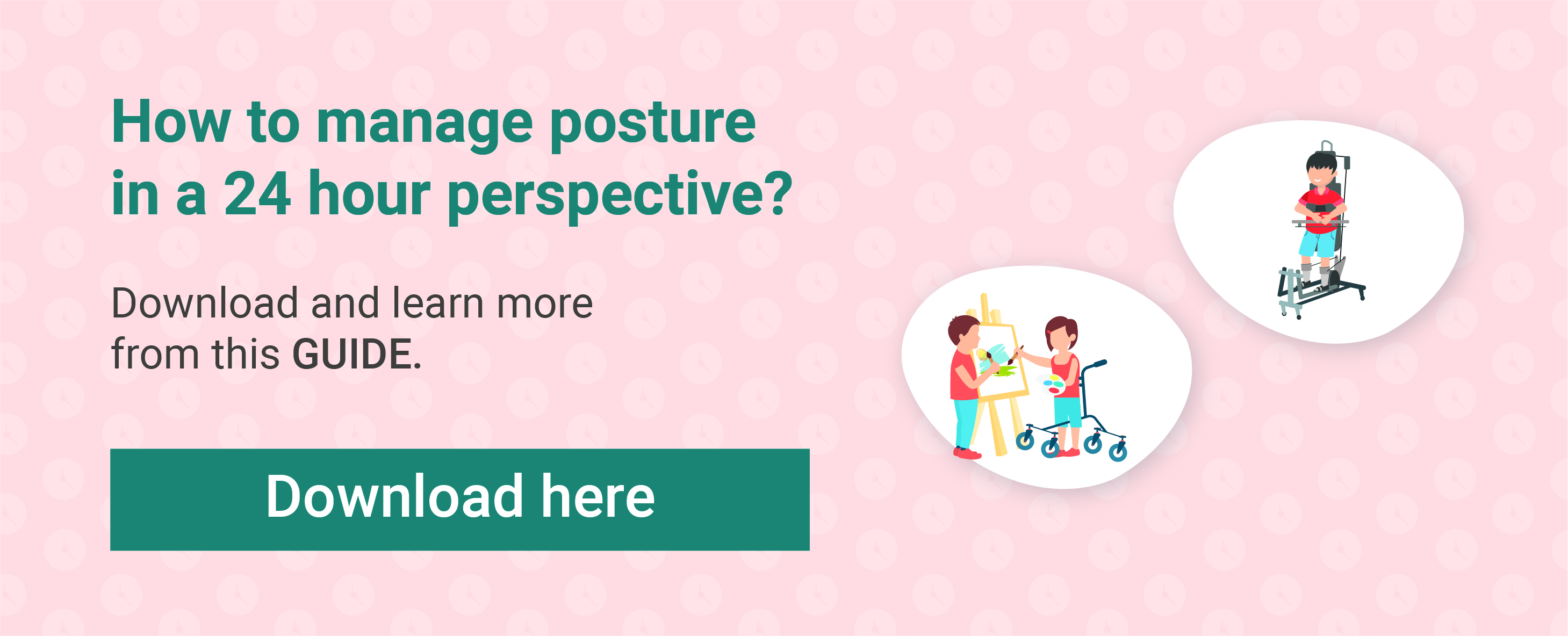
Oct 26, 2021Why Is Early Childhood Intervention so Important?

Back to Blog Overview
Early intervention during the first two years of life is critical for learning tasks, because this is the time when the brain is most likely to adapt and learn.
- What is "early intervention"?
- Why is it important to start as early as possible?
- What type of interventions are initiated in an early phase of life?
What is "early intervention"?
Early intervention in childhood, means identifying deviation or possible risk of developmental delay as early as possible and provide effective early support to the child to stimulate positive development.
What happens in the early years of a child’s life is essential for long term effects on health, language and communication, cognitive and social development. Early interventions often consist of multidisciplinary services to promote child health and well-being, enhance emerging competencies, minimize developmental delays, remediate existing or emerging disabilities, prevent functional deterioration, and promote adaptive parenting and overall family functioning. To reach these goals all services provided to the child, should be individualized and provided in conjunction with mutually planned support for their families.
Read more: Early intervention is not only possible but crucial
/child-father.png?width=948&height=496&name=child-father.png)
Why is it important to start as early as possible?
Brain development is something that has been studied for many generations and new technology makes it possible to get even more insight and knowledge about how the brain is developing and what stimulates to development. It is for example well known that the first two years of life is a critical period of learning tasks, because there is a burst of synapse production in the brain, and this is the time where the brain is most likely to adapt and learn.
If your child has already been diagnosed with a disability or is at risk of developing a disability, your child has probably already been in contact with professionals like physicians, physiotherapist, occupational therapist, nutritionist among others at your hospital. These professionals can help to start the right interventions for your child. They can also guide and support you and your family to meet those special needs your child might have.
What type of interventions are initiated in an early phase of life?
There are several intervention approaches, but no matter the approach, it’s essential to adapt the treatment to the child and its challenges. Recent research gives us some suggestions for intervention in the early phase of life.
Motor developmental stimulation in an enriched environment
Motor developmental stimulation means that the child will be stimulated into naturally development stages – from lying, to rolling, sitting, four-point kneeling, and into standing.
Together with a professional, parents can define goals for the intervention and develop a program to reach the goals. These goals and programs should be adjusted continuously as the child develops. A professional will perform the training together with the parents and guide the parents on how to support the child with their hands and by communication. The training is done in different positions and activities, and the therapist will continuously follow the child’s development and adapt the need of support, amount of challenges and variation accordingly.
Read more: What is Cerebral Palsy?
/Early-intervention-NF-Walker-2.jpg?width=1200&name=Early-intervention-NF-Walker-2.jpg)
The child's environment plays a great role in motor developmental stimulation and the therapist will educate you in how to facilitate this in the different areas where the child spends its time. One example is a diaper change where you will have to know how to position the baby relative to yourself, mirrors, toys and other objects that the child is interested in looking at or touching. Awareness of these aspects makes it possible to stimulate the child in a direction of development during all types of situations and activities throughout the day. Using this approach, the child can achieve a high training volume without having the feeling of training all day long.
Trial and error is also a part of the stimulation for development. A child failing to reach for a toy might think “when I did it like this, I didn’t reach the toy I wanted to play with”, but will benefit from experiencing success the next time around, e.g. “when I turned my hand like this, I made it”. Children practice all the time to improve their function and the complexity of a movement, so it’s vital that you encourage the child to explore this trial and error approach.
Parent-infant interaction
You as a parent play an important role in early intervention. You are close to your child every day and know your child best of all people. Professionals are there to instruct and coach you in this situation, making you feel safe and confident with the situation.
Early application of assistive devices and power mobility
Assistive devices can help you as a parent to support your child in positions that the child finds challenging to perform on their own. In addition, aids can also be appropriate when transporting the child and to promote the child's independent mobility and the opportunity to explore their environment. It can be equipment for positioning in lying, sitting or standing. Mobility equipement such as walking aids, manual or electric wheelchairs and aids for exercise and stimulation. Or assistve devices for self care.
There are many different assistive devices and most of them are available for the smallest children. A therapist can assist you in finding the right equipment to promote social and cognitive development as well as motor function for your child.
Read more: Meet Oliver. He is One in a Billion - A Real-Life Neuro Hero
Sources
- Hadders-Algra, M. (2014). Early diagnosis and early intervention in cerebral palsy. Frontiers in neurology, 5, 185. doi:10.3389/fneur.2014.00185
- Hadders‐Algra, M. (2011). Challenges and limitations in early intervention. Developmental Medicine & Child Neurology, 53(s4), 52-55. doi:10.1111/j.1469-8749.2011.04064.x
- Johnston, M. V. (2009). Plasticity in the developing brain: Implications for rehabilitation. Developmental Disabilities Research Reviews, 15(2), 94-101. doi:10.1002/ddrr.64
- McCollum, J. A. (2001). Book Review: Handbook of Early Childhood Intervention (2nd ed.) J. P Shonkoff & S. J. Meisels (Eds.), Cambridge, MA: Cambridge University Press, 2000, 734 pp., paperback, $34.95 (Book review) (Vol. 21, pp. 176-178).
- Mijna Hadders-Algra, A. G. B., Tjitske Hielkema, Elisa G. Hamer. (2016). Effect of early intervention in infants at very high risk og cerebral palsy: a systematic review. Developmental Medicine & Child Neurology, 59(3), 246-258.
- Morgan, C., Novak, I., Dale, R. C., & Badawi, N. (2015). Optimising motor learning in infants at high risk of cerebral palsy: a pilot study. BMC Pediatrics, 15, 30. doi:10.1186/s12887-015-0347-2
First published: February 16, 2017,
Updated: January 17, 2020, January 19, 2022, January 20, 2023.

Rikke Damkjær Moen brings many years of experience as clinical physiotherapist to the Made for Movement team. Her mission is to ensure that everybody, regardless of mobility problems, should be able to experience the joy and health benefits of physical activity. As our Medical Manager, Rikke is passionate about sharing knowledge so that individuals with special needs, families, and clinicians can discover the possibilities and solutions provided by Made for Movement.


